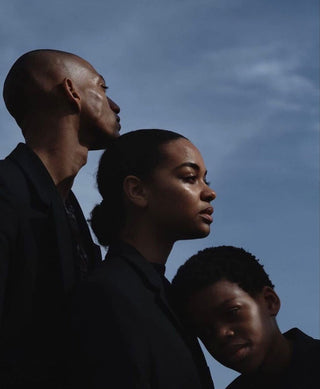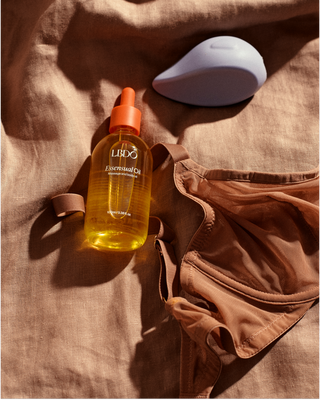Vanessa Hamilton is the founder of Talking The Talk: Sex and Health Education. Since 2013, she has taught preps all the way through to university students about sexuality and consent, as well as guided parents, teachers, and health professionals on how to effectively have “The Talk” with children. (Hint: it’s not just a one-off talk!) Australia could use more parents and educators like Vanessa. LBDO was lucky enough to have her impart some of her wisdom to us.
You call yourself a sexuality educator and not a sex educator. Could you explain why it’s important to differentiate the two?
In my sessions, I ask adults to define the word "sex" and the word "sexuality." When we break it down, broadly speaking, when people hear the word sex, they think of penis-vagina, heterosexual intercourse. They often use phrases like "doing it" or "the deed." They also bring up "gender," which we explore too, typically male and female.
Sex is a very limiting word for what we know about human sexuality. It’s unhelpful because, in the context of sex education, people expect we’re going to teach kids about heterosexual intercourse, when in fact, sexuality encompasses much more. Human sexuality is relevant for people from birth to death, and sexuality education for kids hardly has anything to do with what people commonly think of when they hear the word sex.
Why did you start Talking The Talk?
I had been working as a sexual health nurse for nearly 20 years at that point. As a parent, my eldest child was five, and I wondered if parents needed help having conversations with their kids about sex and sexuality. I was on my third maternity leave while making that decision when I got a question from my five-year-old that stumped me and prompted me to start the business.
What was that question?
“How does the man stop the wee from coming out when he's putting the seed in the vagina?”
I was fine discussing seeds, eggs, and sperm, but suddenly he was talking about ejaculation and orgasm. I thought, “He’s five years old; I don’t know where to go with this.” From there, I started the business. The main aim was to teach parents and teachers, but schools soon approached me, asking for a contemporary approach to sexuality education, as they weren't getting that from their current providers.
You tell parents that they should make themselves their child's main sexuality educator. What's the general reaction when you say this? Are parents ever surprised by this or reluctant to take on that role?
They're not surprised. They agree they should be. Especially when I ask them where they got their information and to reflect on that experience. Most people say they didn't have an adequate education and don't want that for their children. Then we explore that children are getting a sexuality education every day, whether we like it or not, from advertising, TV, social media, society, and pornography. I ask them this key question: “Who do you want to be the main person who talks to your child about each topic of sex and sexuality?” When they reflect on that, they realise they want it to be them. Some laugh and say they want it to be me, and I tell them they can't pay me enough because it’s hard enough to do it for my own children. They understand it needs to be them, and I say, "What do you need to do to get in first and ensure you're the first person?"
Parents need to be a key resource for their children for sexuality education. They need to be an askable parent, and their children need them to be that. We break down the fears and myths to support them in doing that.
Why do you think so many parents are afraid to talk about sexuality with their kids?
There are many reasons. Essentially, our society and our background learning about sex and sexuality have been based on fear, danger, and taboo, whereas we need to replace that with a positive, joyful approach to empowering kids with information. We know that countries that provide comprehensive sexuality education from a young age—age-appropriate, accurate, and inclusive—achieve much better outcomes later in life.
Parents worry they will harm their children; they’re concerned they don’t have the right language; they fear they might say the wrong thing or put ideas into their children's heads—all those inaccurate myths. We can debunk them. We know that giving information is not permission; it's empowering, and with it comes values. Parents often don't understand that young people become sexually active and interested in experimenting, typically expected behaviour for ages 14-15 onward, especially increasing with age. Children don’t suddenly become sexual beings or sexually active the day they finish school, get out of the school uniform, and turn 18.
We are also very conservative about discussing reproduction because we shy away from talking about penis-in-vagina sex. However, it’s a natural part of human reproduction. There’s nothing shameful or taboo about it. Explaining it to kids doesn't make them do it or give them permission. Parents carry layer upon layer of negative perceptions about sex and sexuality, and they need to strip back those layers (excuse the pun) to address the simple language and the simple questions at hand.
Global research indicates it’s beneficial to teach children about sex and sexuality comprehensively. This knowledge is crucial for protecting them from abuse. The silence surrounding the teaching of body part names, body safety, and understanding what's happening to their bodies generally benefits perpetrators. We know that perpetrators often avoid children who have a good understanding of these concepts.
Is there a difference between being really open with your kids about sexuality and having no boundaries on this topic?
Absolutely. The content and language must be age-appropriate. You need to consider a young person's privacy and boundaries while also addressing their health, safety, and well-being needs. For example, I advise parents, “What age should you introduce kids to the concept of online pornography?” The answer is that we should address it when they have internet access. You wouldn’t tell a three-year-old about pornography, but you would explain that there are inappropriate images online that might give them their early warning signs. Incorporating body safety conversations here is essential; they need to know to turn the device over and come to you immediately.
As children grow older, you can adjust your language: "There are fake images of naked people and people engaging in sexual contact on the internet that are harmful for kids. If you come across them, please let us know, and you won't get in trouble." This is suitable for younger ages. Even when they're older—13, 14, 15, 16—you can engage them with questions like, "I read an article stating that 100% of 15-year-old males have seen pornography. Do you think that's accurate? Is that the case for your friends?" These strategies can help foster shared, consensual conversations.
So in your career, have you found that parents in Australia are generally becoming less shame-based in how they communicate with their kids about sexuality?
I believe they are, even if they don’t want to [laughs]. They recognise the need to address it because of the prevalence of pornography and its effects on children, such as exhibiting problematic sexual behaviour and using inappropriate language. I think parents are becoming more aware and realise they need to take action.
Are discussions about sexual pleasure with children and teens also an important part of this?
Absolutely. This topic is very important yet highly lacking.
How would that conversation go?
Pleasure should not be seen as shameful, embarrassing, or taboo. It needs to be integrated into all conversations about bodies. For children, you can use analogies about pleasurable touch: “It's nice to hold your friend's hand, but only if they want to hold your hand and both of you feel good about it.” The analogy here is that sexual intimacy should be pleasurable for both parties.
I tell university students during orientation to raise their expectations for future sexual encounters. They have often been conditioned to accept negative experiences, which should never be the case. Their encounters should be fun and pleasurable, even if they are occasionally awkward or strange; they shouldn’t be negative. We do not discuss pleasure enough. If we want to talk about consent, we must also address pleasure. After all, why would anyone engage sexually with someone who isn’t enthusiastic about it?
What did you think of the Federal Government’s infamous campaign about consent using the milkshake metaphor, which came out earlier this year?
I have no words. It was an appalling waste of public money, and experts were not consulted. I was shocked to be called from a radio station to be interviewed about the new resources that had just been released, and I hadn't even heard about them.
How would you have done the milkshake advertisement differently? What are the more effective ways to communicate about sexuality and consent with kids?
There are so many ways [laughs]. I genuinely think someone in advertising thought, "How can we make it look like someone is ejaculating on someone else's face without consent?" Then they flipped it to feature a woman instead of a man to make it less obvious. Ridiculous. Kids aren't stupid.
How would I approach it? For young teens, I often use Lego as an analogy. I have two stories that I use in the classroom. For younger children, I use shoelaces, while for the older ones, I stick with Lego. For the teens, we discuss sexual consent openly. I explain, "You don’t do something sexually with another person unless they give you enthusiastic, ongoing consent." We delve into what that looks like and emphasise that consent must be complete, enthusiastic, and ongoing. I stress that having better sexual experiences hinges on obtaining consent and that they won’t break the law if they understand this.
One student once asked me, "What if you engage in sexual activity, and the next day she claims she didn’t want to?" I responded, "Let’s go back a step. What likely happened is that you didn’t have enthusiastic ongoing consent at the time; believe me, you’d know if you did." We are not teaching them to identify the verbal and nonverbal signs of enthusiastic consent: "Yes, let's do this." If you don’t have that enthusiastic "Yes, let's do this"—verbally and physically—throughout the experience, then you don’t have consent, plain and simple.
The Lego scenario works like this: if you invite your friend over to build the Death Star, and suddenly they're nearly finished and say they don’t want to play anymore, we discuss how to react. It prompts a great peer conversation about disappointment. Some kids will say, "That’s mean; they should just finish it because I want to." One student even said, "I’d punch them." So we talk about how the other person has the right to change their mind and how you should provide a safe space for that. If someone tells you, "I really don’t feel like continuing," you should be proud that they feel comfortable expressing that. Then we discuss what can be done: they could negotiate something else mutually enjoyable, or one person can finish the activity while the other does something else, or they can take a break. All of these analogies relate to sexual intimacy because consent is a decision-making process, not just about actions. These decisions should be ingrained from a young age, helping them develop the skills needed for intimate encounters later in life.
Ultimately, the conversations we have about sexuality, consent, and pleasure are crucial in guiding children and young adults towards healthy, respectful relationships. By creating an open dialogue, we empower the next generation to embrace their sexuality positively and knowledgeably.
For more information or to contact Vanessa, please visit her website.












